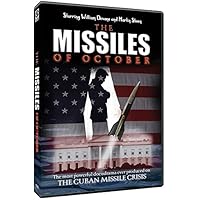Understanding the Tensions: A Deep Dive into \’Missiles of October\’
The Cuban Missile Crisis of October 1962 remains one of the most significant events in the history of the Cold War. This standoff between the United States and the Soviet Union brought the world to the brink of nuclear war. Understanding the tensions surrounding this period is crucial for grasping the geopolitical dynamics of the era and their long-lasting impact on international relations. This article will explore the background, key events, and the aftermath of the crisis, along with lessons learned and its relevance today.
The Background of the Crisis

To appreciate the gravity of the Cuban Missile Crisis, one must first understand the political landscape that led to it. The early 1960s were marked by escalating tensions between the United States and the Soviet Union, characterized by several pivotal events:
- **The Bay of Pigs Invasion (1961)**: A failed CIA operation aimed at overthrowing Cuban leader Fidel Castro, which intensified animosities between the U.S. and Cuba and strengthened Soviet support for Castro.
- **Nuclear Arms Race**: The U.S. and the Soviet Union were engaged in a nuclear arms race, with both nations stockpiling nuclear weapons and delivery systems.
- **U.S. Missiles in Turkey**: The placement of U.S. Jupiter ballistic missiles in Turkey, within striking distance of the Soviet Union, heightened Soviet fears and aggressiveness.
The Discovery of Missiles in Cuba

The crisis began in earnest on October 16, 1962, when U.S. reconnaissance flights over Cuba captured photographic evidence of Soviet missile installations on the island. These intermediate-range ballistic missiles were capable of reaching major U.S. cities within minutes, fundamentally altering the balance of power in the Western Hemisphere. President John F. Kennedy convened a group of advisors, known as the Executive Committee of the National Security Council (ExComm), to formulate an appropriate response.
Key Events During the Crisis
![The Hunt for Red October [DVD] Sean Connery, Alec Baldwin](https://m.media-amazon.com/images/I/817gKCTGg4L._AC_UL140_SR140,140_.jpg)
The Cuban Missile Crisis unfolded over a tense 13-day period, marked by critical decisions, negotiations, and demonstrations of military might. Key events included:
- **Naval Blockade**: On October 22, Kennedy announced a naval blockade (termed a “quarantine”) of Cuba to prevent further shipments of Soviet missiles and military equipment.
- **Soviet Response**: Soviet Premier Nikita Khrushchev denounced the U.S. blockade as an act of aggression and vowed to continue supporting Cuba.
- **Backchannel Communications**: Secret negotiations took place between the U.S. and Soviet governments, with both sides seeking a peaceful resolution.
- **The Brink of War**: On October 27, a U.S. U-2 spy plane was shot down over Cuba, escalating tensions and bringing both nations closer to military confrontation.
The Resolution of the Crisis

Ultimately, the crisis was resolved through a combination of public and private diplomacy. Key developments included:
- **Kennedy’s Assurance**: The U.S. publicly pledged not to invade Cuba, which was a significant concession to the Soviet Union.
- **Removal of U.S. Missiles**: In a secret agreement, the U.S. also agreed to withdraw its Jupiter missiles from Turkey, although this was not disclosed to the public at the time.
- **Khrushchev’s Withdrawal**: On October 28, Khrushchev announced the dismantling of the missile sites in Cuba, effectively ending the crisis.
Consequences of the Cuban Missile Crisis
The resolution of the Cuban Missile Crisis had several significant consequences for both superpowers and global geopolitics:
- **Nuclear Test Ban Treaty (1963)**: The crisis highlighted the dangers of nuclear escalation, leading to the signing of the Nuclear Test Ban Treaty, which prohibited atmospheric nuclear tests.
- **Hotline Agreement**: A direct communication link was established between Washington and Moscow to prevent future crises from escalating.
- **Shift in Soviet Strategy**: The crisis forced the Soviet Union to reconsider its approach to international conflicts, favoring more cautious strategies in the future.
Lessons Learned from the Crisis

The Cuban Missile Crisis serves as a rich source of lessons relevant to contemporary international relations. Some of the key takeaways include:
- **Importance of Communication**: Open lines of communication can prevent misunderstandings and miscalculations during crises.
- **Avoiding Escalation**: Diplomatic solutions are often preferable to military actions, especially when nuclear weapons are involved.
- **Global Impact of Regional Conflicts**: Localized conflicts can have far-reaching global implications, necessitating careful international oversight and intervention.
Modern-Day Implications

While the Cuban Missile Crisis occurred over six decades ago, its implications resonate in today’s geopolitical climate:
- **North Korea’s Nuclear Threat**: The situation with North Korea mirrors aspects of the Cuban Missile Crisis, with concerns over missile capabilities and nuclear proliferation.
- **U.S.-Russia Relations**: Tensions between the U.S. and Russia have seen a resurgence in recent years, underscoring the importance of diplomacy and crisis management.
- **Global Nuclear Policy**: The ongoing discussions about nuclear disarmament and non-proliferation are heavily influenced by the lessons learned from the crisis.
The Cuban Missile Crisis remains a pivotal moment in history, illustrating the fragility of international peace in an era marked by nuclear weapons. The tensions of October 1962 forced world leaders to confront the dire consequences of their actions and highlighted the necessity for effective communication and diplomacy. As we navigate modern geopolitical challenges, the lessons learned from this crisis continue to inform policymakers and shape global nuclear policy. The stakes remain high, and the importance of understanding these historical tensions cannot be overstated.


